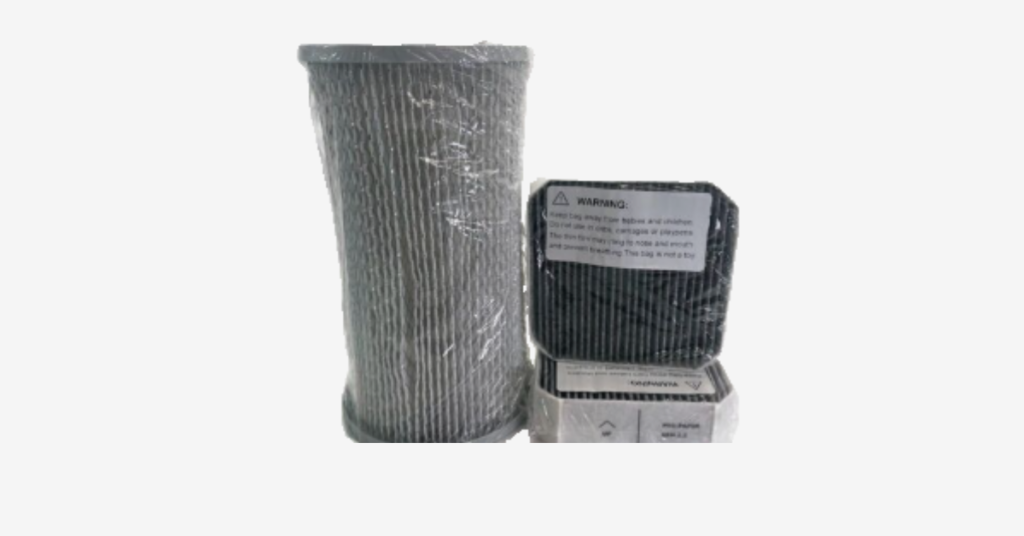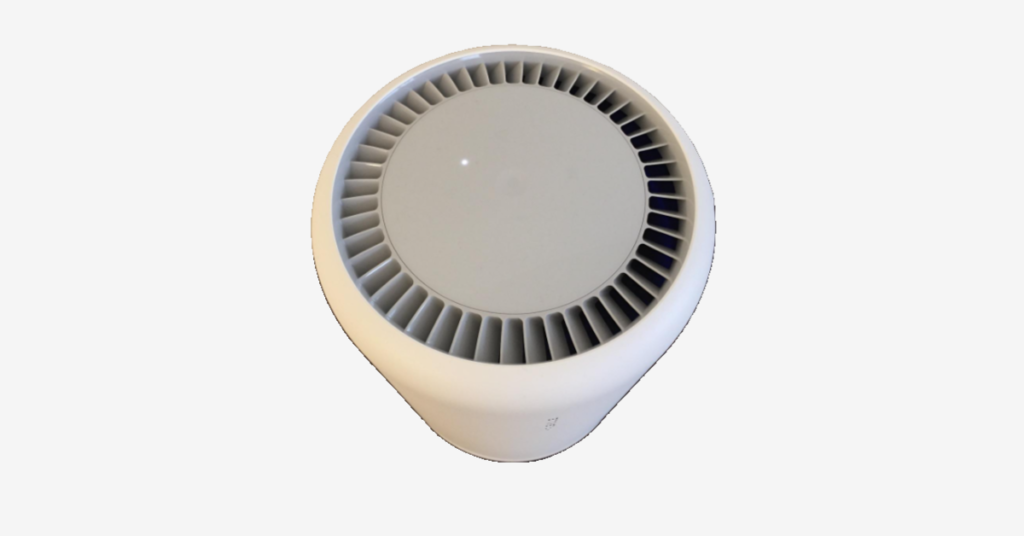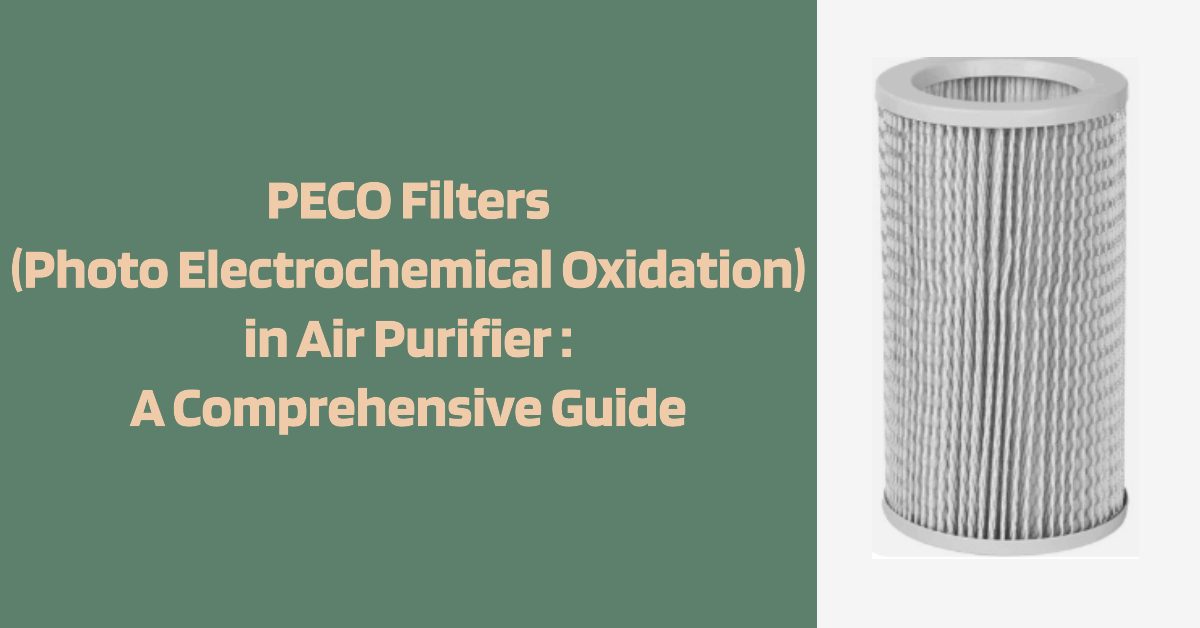PECO Filters (Photo Electrochemical Oxidation) in Air Purifier revolutionize indoor air purification, setting a new standard for enhanced respiratory well-being. Employing advanced technology, these filters go beyond conventional methods, utilizing a groundbreaking process known as Photo Electrochemical Oxidation to eliminate pollutants at a molecular level. This innovative approach distinguishes PECO filters from traditional counterparts, offering a comprehensive solution for improved air quality in various settings.
In the realm of air purification, PECO technology emerges as a transformative force, addressing the limitations of conventional methods with remarkable efficacy. Unlike standard HEPA filters, PECO Filters leverage the power of Photo Electrochemical Oxidation, a process that enables them to break down pollutants at their core. This molecular-level purification ensures the removal of particulate matter, volatile organic compounds (VOCs), and microbial contaminants, providing not only cleaner air but also a healthier living environment.
The advantages of these Filters extend beyond mere air cleaning; they encompass a range of applications spanning residential, commercial, and healthcare settings. PECO technology excels in diverse environments, offering a versatile solution for individuals seeking an efficient and reliable air purification system.
Introduction
PECO filters, short for Photo Electrochemical Oxidation filters. PECO technology has emerged as a promising method for air purification, especially for individuals grappling with severe allergies. Air purifiers play a crucial role in safeguarding allergy-prone individuals within the confines of their homes; however, traditional purification methods often fall short in addressing minute allergens. Filters wit PECO, on the other hand, exhibit the capability to eliminate particles as tiny as 0.1 nm.

A. What is a PECO Filter?
A PECO filter is an air purification technology that utilizes Photo Electrochemical Oxidation. These filters leverage the power of advanced oxidation processes to achieve superior air purification. The functionality of these filters revolves around the excitation of photons, which stimulate a photocatalyst. This process generates hydroxyl free radicals known for their high reactivity, effectively oxidizing organic materials and microorganisms responsible for allergy symptoms. The end result is the formation of harmless byproducts such as carbon dioxide and water.
B. Brief Explanation of Photo Electrochemical Oxidation
Photo Electrochemical Oxidation involves the generation of reactive oxygen species (ROS) through exposure to ultraviolet (UV) light. These ROS play a pivotal role in breaking down pollutants at a molecular level, offering a comprehensive solution to enhance indoor air quality.
C. Purpose of PECO Filters in Air Purifiers
PECO filters aim to address the limitations of traditional filters by effectively removing particulate matter, volatile organic compounds (VOCs), and even microbial contaminants. The integration of PECO technology into air purifiers signifies a significant leap forward in the quest for cleaner and healthier indoor environments.

PECO Filters: An Overview
Now lets explore the distinctive features that set PECO filters apart, understand how PECO technology differs from High-Efficiency Particulate Air (HEPA) filters, and know the advantages that PECO filters bring in air purification.
A. What Sets PECO Filters Apart
PECO filters stand out due to their innovative approach, going beyond mere particle filtration. The combination of UV light and electrochemical oxidation elevates their effectiveness in neutralizing a broader range of pollutants.
B. How PECO Technology Differs from HEPA Filters
While HEPA filters excel at capturing particles of a certain size, PECO filters take air purification to the next level. The Photo Electrochemical Oxidation process allows these filters to address contaminants at a molecular level, providing a more comprehensive solution.
C. Advantages of PECO Filters
The advantages of PECO filters extend beyond their ability to capture particles. They excel in eliminating VOCs, bacteria, and viruses, offering a holistic approach to indoor air purification. The efficiency and versatility of these filters make them a compelling choice for those seeking optimal air quality.

How PECO Filters work?
Delve into the intricate process of Photo Electrochemical Oxidation, understand the role of Reactive Oxygen Species (ROS), and understand how these filters excel in breaking down pollutants at a molecular level.
A. Photo Electrochemical Oxidation Process
The heart of PECO technology lies in the Photo Electrochemical Oxidation process. UV light activates a catalyst, triggering the formation of ROS. These highly reactive species then work to oxidize and decompose pollutants, leaving behind purified air.
B. Role of Reactive Oxygen Species (ROS)
ROS generated during the PECO process play a crucial role in the oxidation of contaminants. This targeted approach ensures the efficient breakdown of pollutants, contributing to the effectiveness of PECO filters in providing clean and healthy air.
C. Breaking Down Pollutants at a Molecular Level
Unlike conventional filters that rely on physical barriers, PECO filters operate at the molecular level. By disassembling pollutants at their core, PECO technology offers a more thorough and lasting solution to indoor air pollution.
Effectiveness of PECO Filters
Evaluate the performance of PECO filters in terms of particulate matter removal, elimination of VOCs, and their efficacy against microbial contaminants.
A. Removal of Particulate Matter (PM)
PECO filters effectively capture and eliminate particulate matter, ranging from dust and pollen to microscopic particles. This robust particulate removal capability contributes to maintaining a clean and breathable indoor environment.
B. Elimination of VOCs (Volatile Organic Compounds)
Addressing indoor air quality goes beyond particle filtration. PECO filters excel in eliminating VOCs, which can originate from various sources such as cleaning products, paints, and furnishings. This comprehensive approach ensures a healthier living space by minimizing exposure to harmful compounds.
C. Addressing Microbial Contaminants
Microbial contaminants, including bacteria and viruses, pose significant health risks. PECO filters demonstrate efficacy in neutralizing these contaminants, providing an added layer of defense against airborne pathogens. This aspect is particularly crucial for environments where maintaining a sterile atmosphere is paramount.
D. Reseach
In research trials conducted with allergy patients, the implementation of PECO filters yielded promising outcomes. After just four weeks of using PECO technology, researchers observed substantial reductions in total symptom scores (TSS) related to both nasal (TNSS) and ocular (TOSS) allergies. This research underscores the significant potential of these filters in fostering impactful health improvements for individuals grappling with severe allergies and asthma.
Comparison with other Air Purification Methods
Contrast PECO filters with prevalent air purification methods, including HEPA filters and activated carbon filters. Evaluate performance metrics and efficiency to make informed decisions when selecting an air purification solution.
A. PECO vs. HEPA Filters
While both PECO and HEPA filters target airborne contaminants, their mechanisms differ. HEPA filters primarily rely on mechanical filtration, capturing particles based on size. PECO filters, on the other hand, utilize Photo Electrochemical Oxidation for molecular-level purification, providing advantages in addressing a broader range of pollutants.
Are PECO Air Filters Better than HEPA?
PECO (Photo Electrochemical Oxidation) air filters and HEPA (High-Efficiency Particulate Air) filters serve different purposes. While HEPA filters excel at trapping particles, PECO filters go a step further by using photo electrochemical oxidation to break down pollutants at a molecular level. The choice depends on specific air purification needs.
B. PECO vs. Activated Carbon Filters
Activated carbon filters excel in adsorbing gases and odors, but their effectiveness against particles and microbes may vary. PECO filters offer a comprehensive solution by combining UV light and electrochemical oxidation, making them versatile in addressing multiple types of pollutants.
C. Performance Metrics and Efficiency
Assess the performance metrics of PECO filters, considering factors such as Clean Air Delivery Rate (CADR) and air changes per hour. Understanding the efficiency of PECO technology empowers consumers to make informed choices aligned with their specific air purification needs.
Applications of PECO Filters
Explore the diverse applications of PECO filters, spanning residential air purification, commercial and industrial uses, as well as their role in health care and clean room environments.
A. Residential Air Purification
Enhance the air quality within homes by incorporating PECO air purifiers. The molecular-level purification offered by filters with PECO ensures a healthier living environment, reducing the presence of allergens, pollutants, and microbial contaminants. The compact and user-friendly design of residential PECO air purifiers makes them an ideal choice for creating a safe haven within homes.
B. Commercial and Industrial Uses
PECO filters prove their efficacy in large spaces, addressing the unique challenges posed by industrial pollutants. Whether in manufacturing facilities or office complexes, PECO air purification systems contribute to a safer and more productive working environment.
C. Health Care and Clean Room Environments
In critical environments like health care facilities and clean rooms, maintaining air quality is paramount. PECO filters offer a reliable solution by effectively neutralizing airborne pathogens and contaminants. The advanced purification capabilities make PECO technology a valuable asset in spaces where maintaining sterile conditions is essential.
Considerations for Choosing PECO Air Purifiers
When selecting PECO air purifiers, consider factors such as size and coverage area, maintenance requirements, and the overall cost of ownership. These considerations play a crucial role in ensuring the optimal performance and longevity of the air purification system.
A. Size and Coverage Area
Determine the size of the space you intend to purify and choose a PECO air purifier with an appropriate coverage area. Understanding the dimensions and layout of the space helps in selecting a unit that can effectively circulate purified air, providing comprehensive coverage.
B. Maintenance Requirements
PECO air purifiers typically have straightforward maintenance needs. Regularly replacing filters and following manufacturer guidelines for cleaning and upkeep ensures consistent performance. Consider the ease of maintenance when choosing a PECO air purification system to streamline its long-term care.
C. Cost of Ownership
While the initial investment in a PECO air purifier is a crucial consideration, evaluating the overall cost of ownership provides a more comprehensive perspective. Factor in ongoing maintenance, filter replacement costs, and energy efficiency to make an informed decision that aligns with both budgetary constraints and air purification requirements.
Challenges and Limitations
Despite the significant benefits of PECO filters, it’s essential to acknowledge potential challenges and limitations. Understanding these aspects allows users to make informed decisions and mitigate any drawbacks associated with PECO air purification.
A. Specific Contaminant Limitations
While these filters excel in addressing a wide array of contaminants, there may be specific substances or particulates for which their efficacy is limited. It’s crucial to be aware of these limitations and, if necessary, supplement air purification with targeted solutions for specific pollutants.
B. Potential Energy Consumption
PECO air purifiers, like any electrical appliance, contribute to energy consumption. While modern PECO systems are designed to be energy-efficient, users should be mindful of their operational hours and impact on overall energy costs. Consideration of energy consumption is essential for maintaining an eco-friendly and cost-effective approach to air purification.
C. Lifespan of PECO Filters
Regularly replacing filters as per the manufacturer’s recommendations is vital. Users should be aware of the expected filter lifespan and factor this into their maintenance routine to ensure uninterrupted air purification.
Future Trends in Air Purification Technologies
Anticipate the future trajectory of air purification technologies, with a focus on continuous innovation in filter designs, integration with smart home systems, and the evolution of sustainable and eco-friendly approaches.
A. Continuous Innovation in Filter Designs
Stay informed about the ongoing advancements in air filter designs. The evolution of filter technologies, including enhancements to these filters, plays a crucial role in adapting to emerging air quality challenges and optimizing purification efficiency.
B. Integration with Smart Home Systems
Explore how air purifiers, including those utilizing PECO technology, are integrating with smart home systems. The convergence of air purification with smart technologies enhances user convenience, allowing for remote monitoring, scheduling, and customization of purification settings based on real-time air quality data.
C. Sustainable and Eco-friendly Approaches
Witness the shift towards sustainable practices in air purification. Evaluate how manufacturers are incorporating eco-friendly materials, energy-efficient components, and recyclable elements into air purifier designs. The pursuit of sustainability aligns with broader environmental goals and contributes to responsible consumption and waste reduction.
Environmental Impact of PECO Filters
The use of PECO Filters (Photo Electrochemical Oxidation) in air purifiers extends beyond individual well-being to encompass a broader environmental impact. In this section, we explore the footprint of PECO technology, comparing it with traditional filters, and delve into considerations related to recycling and disposal.
A. Comparing Footprints with Traditional Filters
PECO Filters demonstrate a commendable environmental footprint when juxtaposed with conventional air purification methods. Traditional filters, while effective in trapping larger particles, often fall short in addressing microscopic pollutants. PECO’s molecular-level purification not only ensures the removal of minute contaminants but also does so with greater efficiency, minimizing the need for frequent replacements.
B. Recycling and Disposal Considerations
As the demand for sustainable solutions grows, the end-of-life considerations for air purifier filters become crucial. These Filters, designed with a commitment to environmental responsibility, present advantages in terms of recycling and disposal.
C. Role in Sustainable Living
The environmental impact of these Filters goes beyond their immediate use. By contributing to improved indoor air quality, PECO technology indirectly fosters sustainable living. Healthier indoor environments reduce the reliance on external factors, such as medications or medical interventions, leading to a more sustainable lifestyle.
Difference between PCO and PECO
PCO (Photocatalytic Oxidation) and PECO (Photo Electrochemical Oxidation) are both advanced air purification technologies, but they operate using different mechanisms.
- PCO (Photocatalytic Oxidation):
- Mechanism: PCO uses a photocatalyst, often titanium dioxide (TiO2), which is activated by ultraviolet (UV) light. When the photocatalyst is energized by UV light, it generates reactive oxygen species (ROS) like hydroxyl radicals.
- Functionality: These ROS are highly reactive and capable of oxidizing and breaking down organic compounds, bacteria, viruses, and other pollutants in the air.
- Byproducts: PCO produces byproducts, including carbon dioxide and water vapor, after the oxidation process.
- PECO (Photo Electrochemical Oxidation):
- Mechanism: PECO, on the other hand, utilizes a filter with a proprietary coating. When photons from UV light interact with the coated filter, a process known as photo electrochemical oxidation is initiated.
- Functionality: PECO’s mechanism involves the generation of hydroxyl radicals, similar to PCO. These radicals then oxidize and neutralize pollutants at a molecular level.
- Byproducts: PECO, like PCO, produces harmless byproducts such as carbon dioxide and water.
While both PCO and PECO utilize UV light and create reactive species for oxidation, PECO incorporates a proprietary filter with a specialized coating that enables the photo electrochemical oxidation process. The choice between PCO and PECO often depends on specific air purification needs and the effectiveness of the technology in addressing particular pollutants.
Conclusion
In conclusion, PECO Filters (Photo Electrochemical Oxidation) stand as a groundbreaking innovation in the realm of air purification. The technology’s unique approach, harnessing the power of photo electrochemical oxidation, sets it apart from traditional methods and elevates its efficacy in enhancing indoor air quality. Throughout this exploration, we’ve delved into the intricate workings of these Filters, understanding their molecular-level purification process and how they effectively address particulate matter, volatile organic compounds (VOCs), and microbial contaminants.
PECO Filters emerge not only as a technological marvel but also as a catalyst for healthier living environments. Summarizing their benefits, we recognize the transformative impact PECO technology can have on indoor air quality, ultimately encouraging its adoption for a future where cleaner, purer air is synonymous with enhanced well-being.
FAQ
How Long Do PECO Filters Last?
The lifespan of PECO filters varies based on usage and environmental conditions. On average, they typically last several months before requiring replacement. Regular monitoring of the filter’s status and adherence to manufacturer recommendations ensure optimal performance.
Is It Safe to Use a PECO Filter?
Yes, PECO filters are considered safe for air purification. They generate reactive species like hydroxyl radicals during the oxidation process, but the byproducts, such as carbon dioxide and water, are harmless. It’s essential to follow usage guidelines for the specific PECO filter brand.
Can You Clean a PECO Filter?
PECO filters are not designed for cleaning or washing. Cleaning attempts may compromise their effectiveness. The recommended practice is to replace the PECO filter according to the manufacturer’s guidelines.
Do PECO Filters Create Ozone?
PECO filters do not create ozone as a byproduct of their operation. They produce harmless byproducts like carbon dioxide and water during the oxidation process, contributing to a safe and efficient air purification process.
DheerajSonwane is a dedicated writer with expertise in air purification technologies. He focuses on providing well-researched content to help readers improve indoor air quality in homes and businesses. As the lead writer at AirPurifierMaster.com, Dheeraj offers practical advice his insightful reviews guide individuals in choosing the best air purifiers for their needs.

